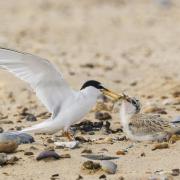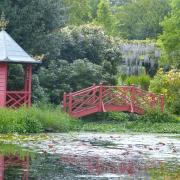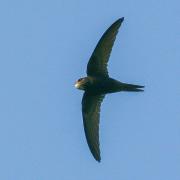Nestled on our Suffolk coastline, just a few miles east of Saxmundham, is a real beacon for wildlife, RSPB Minsmere. More than 6,000 wildlife species have been recorded there, and it offers a wide range of habitat for them to call home. From reedbed, to wet grassland, woodland to heathland, Minsmere has it all.
This winter sees the culmination of three years of work at the iconic Minsmere Scrape, a 20.5 hectare wetland. The Scrape is a magnet for wading birds and seabirds, consisting of shallow saltwater and freshwater lagoons, with a series of islands dotted throughout. This lagoon habitat supports a wide variety of invertebrates, providing important feeding and breeding areas for birds.


It now benefits from the addition of new shingle islands and the revamping of older ones, re-landscaping of lagoons, and clearer viewing points, so visitors can see wildlife more easily. The Scrape also has a brighter future in the face of climate change, thanks to the installation of new water level controls to help keep water at an even level during times of drought or flooding.
A key ambition of this work was to entice the charismatic Little Tern to breed regularly at Minsmere again, as there has been patchy breeding success for this endangered species in recent years. A dainty bird, it is the smallest tern to visit our shores and comes to the UK each summer to breed. Perfectly colour co-ordinated, its yellow beak complements the orange/yellow of its legs and feet. Light grey wings with black tips blend into its bright white feathered body and, to top it off, it has a black cap on its head, a dramatic white forehead and black eye stripe.


The shingle beach at the edge of the nature reserve once supported a breeding colony of Little Terns, but it has been almost two decades since they last bred there. In 2019, after adults nested on the Scrape, seven Little Tern chicks successfully fledged at RSPB Minsmere but since then, nothing.
However, in spring this year, eight pairs of Little Tern returned to take up residency on the newly revamped Scrape islands, hatching several chicks. Sadly, they did not survive due to predation, but this breeding attempt confirms that Little Terns consider this a suitable nesting site and is an encouraging sign for the future.


The Scrape was created in the 1960s with Avocet in mind – the bird featured on the RSPB logo. At that time the species was critically endangered so the original idea was to landscape part of the nature reserve to encourage them to breed. It was a success, however, after decades of heavy use by many species, not just Avocet, the Scrape’s lagoons and islands needed significant rejuvenation to maximise their benefit to coastal birds.
A decision was made to improve and extend the existing wetland habitat as part of the LIFE on the Edge programme, improving coastal nature sites in England. Work on the Minsmere Scrape Enhancement Project started in the winter of 2021, thanks to funding from the EU Life+ project and National Grid Landscape Enhancement Initiative.



The result is a thriving habitat; not only have Little Terns returned to attempt to breed, since the start of the project a bounty of birds have been spotted on the Scrape and its islands, including Avocet, Sandwich Tern, Common Tern, Spoonbill, Black-tailed Godwit, Common Sandpiper, Ruff, Oystercatcher, Mediterranean Gulls, Ringed Plover and Lapwing to name just a few. A notable rare Scrape visitor this year was a Buff-breasted Sandpiper, the first sighting at RSPB Minsmere for 62 years.
If you want to visit the Scrape and see its wonderful wildlife for yourself, RSPB Minsmere is open all year round. Regular wildlife themed events and activities take place for nature enthusiasts and families, and there is a visitor centre, café and shop. To find out more about visiting go to rspb.org.uk/minsmere. We look forward to seeing you soon.




























